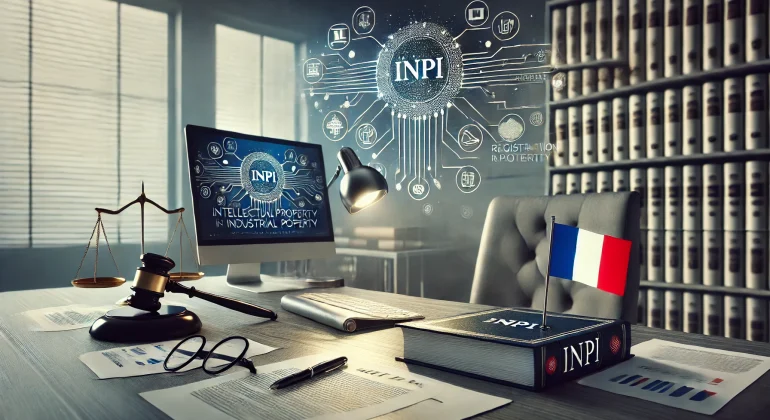Legal challenges of product similarity in the fashion industry
The fashion industry, known for its dynamism and innovation, is also a sector where protecting trademarks and designs is essential. One of the major challenges brands face in this field is product similarity. The definition and interpretation of this similarity have a direct impact on the scope of legal protections, particularly for trademarks, patents, and designs. This article examines various aspects of product similarity in the fashion industry, based on recent jurisprudence and developments in the field.
CONTENTS
- What is product similarity?
- The INPI vs. the Paris Court of Appeal: A jurisprudential divergence
- The importance of similarity for fashion industry players
- The rise of “dupes”: A threat to intellectual property
- The need for jurisprudential clarification to ensure legal certainty
What is product similarity?
Product similarity refers to the evaluation of the degree of resemblance between two products or services, particularly in the context of trademark registration. This assessment is crucial as it determines whether a product or brand already exists on the market and whether another product could cause confusion among consumers.
In the fashion industry, this involves comparing not only the products themselves (clothing, accessories, perfumes) but also their uses, target audiences, and consumer perceptions. Competent authorities, such as the INPI (French Intellectual Property Office) or the Paris Court of Appeal, are responsible for resolving such disputes when a trademark is contested.
The criteria for similarity include:
- Physical characteristics of the product: shape, color, material, etc.
- Visual impression: how a consumer might perceive the products when observing them.
- Purpose and use: products serving similar purposes may be deemed similar.
- Target audience: for example, a luxury brand and an average ready-to-wear brand, while visually similar, may target different market segments and not cause confusion.
The INPI vs. the Paris Court of Appeal: A jurisprudential divergence
Differences in the interpretation of product similarity in the fashion industry have led to contradictory decisions. In some cases, the INPI considers perfumery, jewelry, and watchmaking products to be marginally similar to clothing. According to the INPI, similarity lies in the potential association between these products in the consumer’s mind, which could cause confusion regarding their origin.
However, the Paris Court of Appeal adopts a stricter stance, often relying on jurisprudence from the European Union’s General Court. The Court views the similarity between products as different as clothing and fashion accessories, such as jewelry or watches, as more limited due to clear differences in their use, design, and presentation.
These divergences create legal uncertainty for fashion industry players. Brands may face difficulties determining whether their protections cover all related products or if their trademarks might be challenged over similar but non-identical products. This raises broader questions about intellectual property protection, particularly regarding the scope and validity of registered trademarks.
The importance of similarity for fashion industry players
For fashion brands, legal protection depends on creating a strong and distinct identity. Industry players must be vigilant to avoid their products being perceived as copies of existing designs. This requires a differentiation strategy based on:
- Innovative and unique designs
- A clear brand image
- Effective communication campaigns
Legal decisions on product similarity directly influence this strategy, as they determine how far a brand can go in launching new products while respecting the intellectual property rights of others.
The rise of “dupes”: A threat to intellectual property
The proliferation of “dupes,” imitations of high-end products offered at affordable prices, disrupts traditional notions of intellectual property protection. These products, widely popularized on social media, blur the line between legitimate inspiration and counterfeiting. While they do not claim to impersonate a brand, their visual or functional similarity can confuse consumers and diminish the perceived value of original products.
Legal challenges posed by dupes include exploiting grey areas in existing protections. Although designs effectively protect certain distinctive features, they often fail to counter such imitations. Shape trademarks and copyright laws, while helpful, involve complex and often lengthy legal proceedings.
The rise of dupe culture reflects admiration for luxury products and a desire to democratize style. However, it also poses an economic risk to established brands. By flooding the market with low-cost products, dupes undermine the exclusivity and innovation that define luxury brands.
In a context where consumers increasingly gravitate toward these alternatives, brands must double down on differentiation efforts through both designs and communication. Explicit recognition of intellectual property rights, combined with a proactive strategy against dupes, is crucial for maintaining their market position.
The need for jurisprudential clarification to ensure legal certainty
Disputes over product similarity are common in the fashion industry, as many brands seek to protect distinctive elements such as patterns, cuts, or logos. These disputes can result in significant costs, not only for the parties directly involved but also for the entire market due to the length and complexity of legal proceedings.
The evolution of judicial decisions demonstrates that product similarity in the fashion industry is a constantly evolving concept. The divergences in interpretation between the INPI and the Paris Court of Appeal highlight the need for legal clarification. More consistent jurisprudence would better frame trademark protections and mitigate current legal uncertainty.
Clarifying the criteria for product similarity would enhance legal certainty for fashion industry players. In the meantime, brands must remain particularly vigilant and adopt robust differentiation strategies to protect against litigation and consumer confusion.
The fashion industry, with its specificities, requires in-depth analysis of products, their uses, and consumer perceptions to ensure effective intellectual property protection. The challenge lies in brands’ ability to navigate this complexity while remaining innovative and distinctive.
Our experts are at your disposal to advise you on intellectual property strategy and online brand protection. Dreyfus Law Firm works in partnership with a global network of intellectual property lawyers.
Join us on social media!










